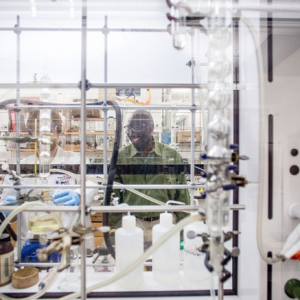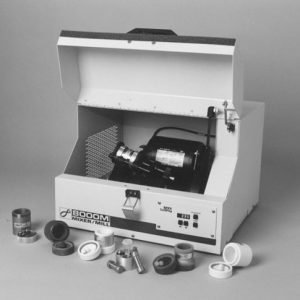By Fariha Fawziah
Tony Mack (who is an 8th grader), and his father James Mack (who is a chemist at the University of Cincinnati), had a race to prepare a mix of stilbene molecules to make dyes. However, both were using different preparation methods. Dr. Mack was heating up the ingredients by stirring the solution in a heated flask; while Tony crushed the ingredients with balls tumbling on each side while simultaneously a machine called a “ball mill” shook them strenuously. Tony finished mixing first with 30 percent more stilbene while Dr. Mack was still two hours away from finishing.
In chemistry, it’s traditional to dissolve, heat and stir chemicals in a solution. However, there’s a brand new technique called mechanochemistry, which is chemistry functioning via mechanical force. This method is much safer and beneficial for the environment.
Chemists aren’t really happy about solvents. For instance, Xiaozhi Lim writes “Many commonly used solvents, like chloroform, acetone, and hexane, are harmful and volatile, posing risks to people who inhale them as well as the environment. Solvents also make up the vast majority of chemical waste, and consume most of the energy used in a chemical reaction.” (Lim, Paragraph 6)
Even though scientists knew how harmful solvents were, they never looked for an alternative. Clearly, scientists were satisfied with solvents since with this method they thought the particles would be mixed sufficiently for a reaction to occur.
Additionally, there are several parts to the ball-milling machine. For example, Lim writes, “The mechanochemists slowly learned how to control the milling process by changing parameters like the shaking speed, number of balls, ball size, and materials of the reaction vessel and the balls.” (Lim, Paragraph 19) This shows that just as in a traditional chemistry experiment, there are necessary components, such as the temperature, the dependent and independent variable, the measurements, etc. Furthermore, Lim writes, “They demonstrated that a ball mill could impart enough energy to break and form strong bonds like carbon-carbon and carbon-metal bonds. They also discovered that milling enabled reactions that could not be performed in solutions, opening up new possibilities.” (Lim, Paragraph 15)
This excites me because honestly, solvents couldn’t mix strong bonds between certain chemicals, while the ball milling method could. There are other advantages of this mechanochemical method. For instance, as Lim points out: “mechanochemical method [makes] pure alane, an aluminum-based material for hydrogen storage. Solution methods typically produce impure alane because solvent molecules tend to stick to it.” (Lim, Paragraph 17)
This is another new advantage that this new machine method seems to have. I found this surprising since I never actually knew that solvents produce impure alane. Overall, it appears that this mechanochemical method offers notable opportunities to discover new possibilities that scientists never considered before.
Future Questions:
1) With this mechanochemical method, will you still be able to tell if the reaction is a chemical change or a physical change? If so, how?
2) How does this method interact with gas particles?
[Citation: http://www.nytimes.com/2016/07/19/science/green-chemistry-mechanochemistry.html?ribbon-ad-idx=10&rref=science&module=Ribbon&version=context®ion=Header&action=click&contentCollection=Science&pgtype=article]



